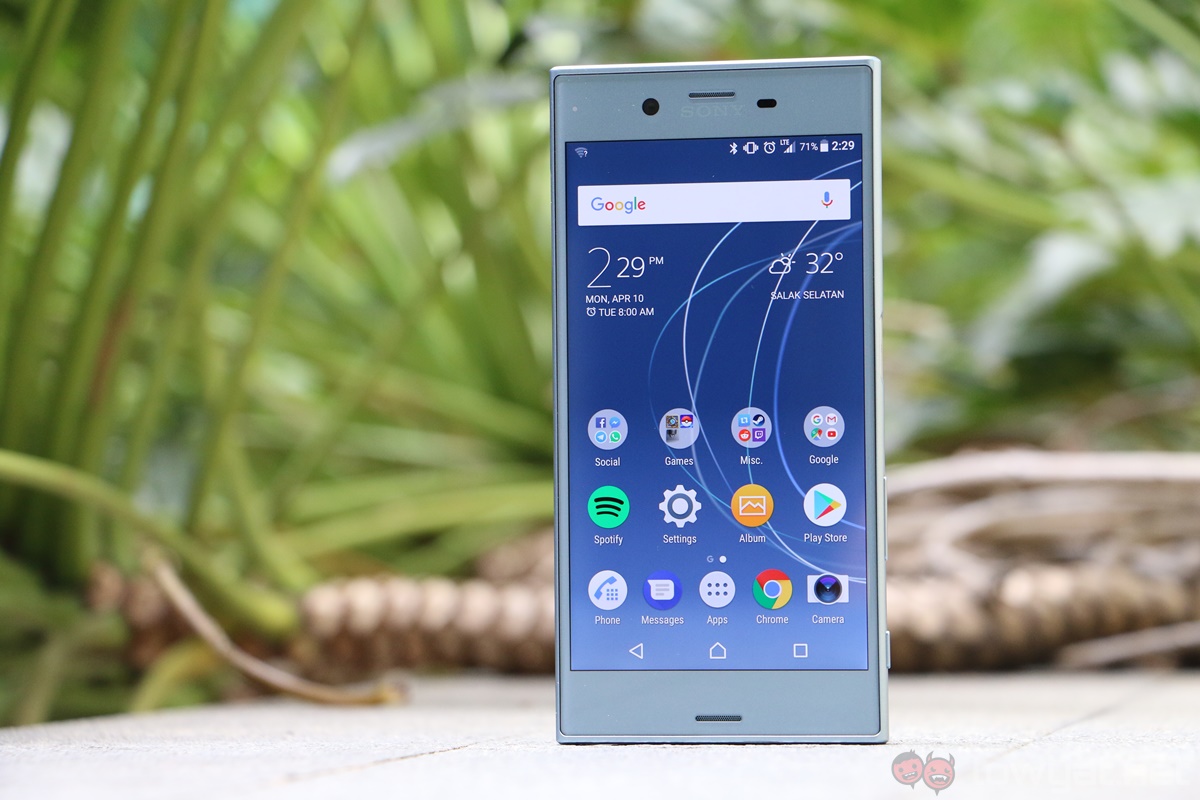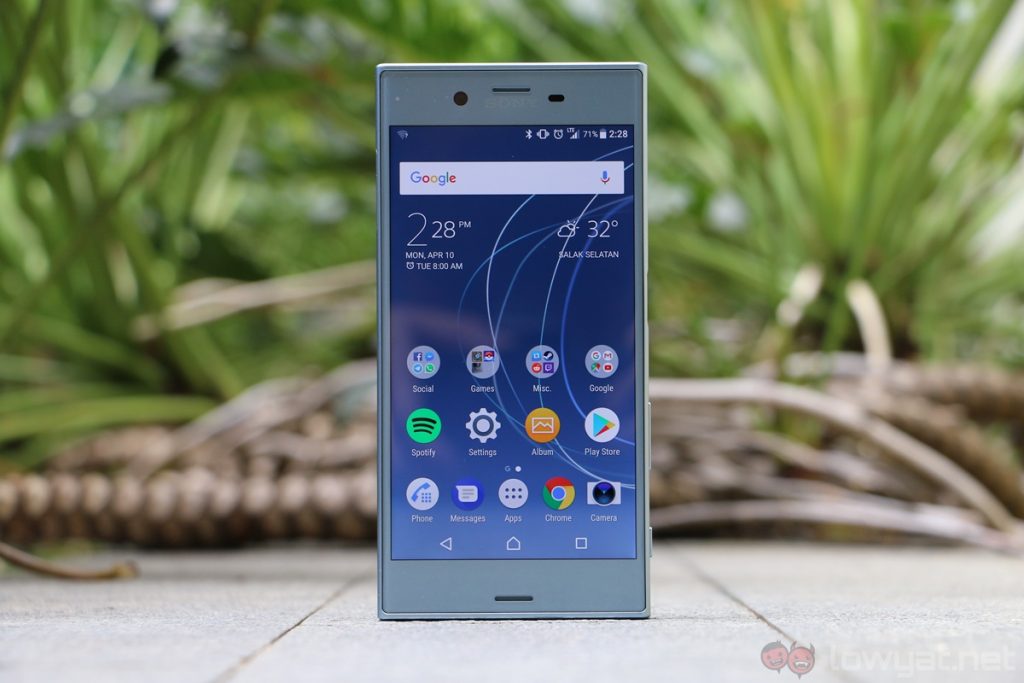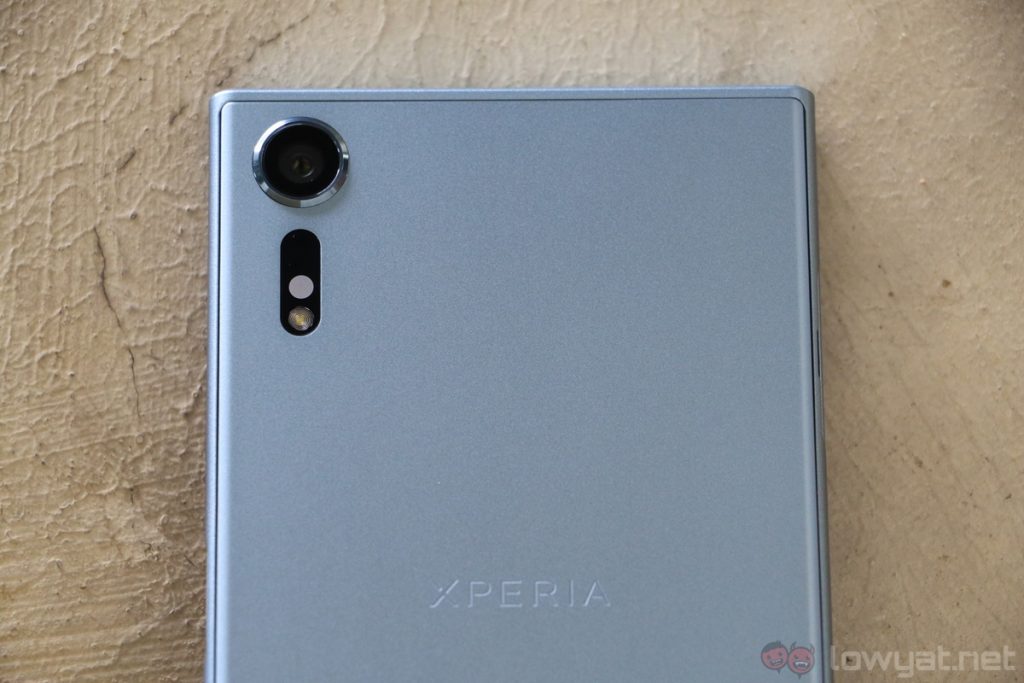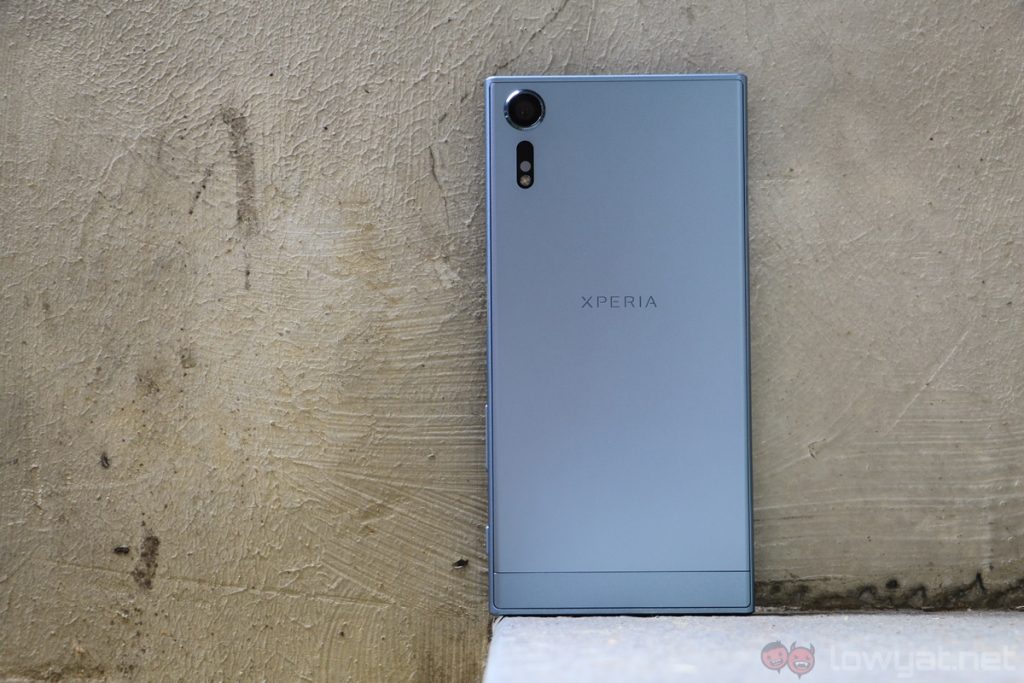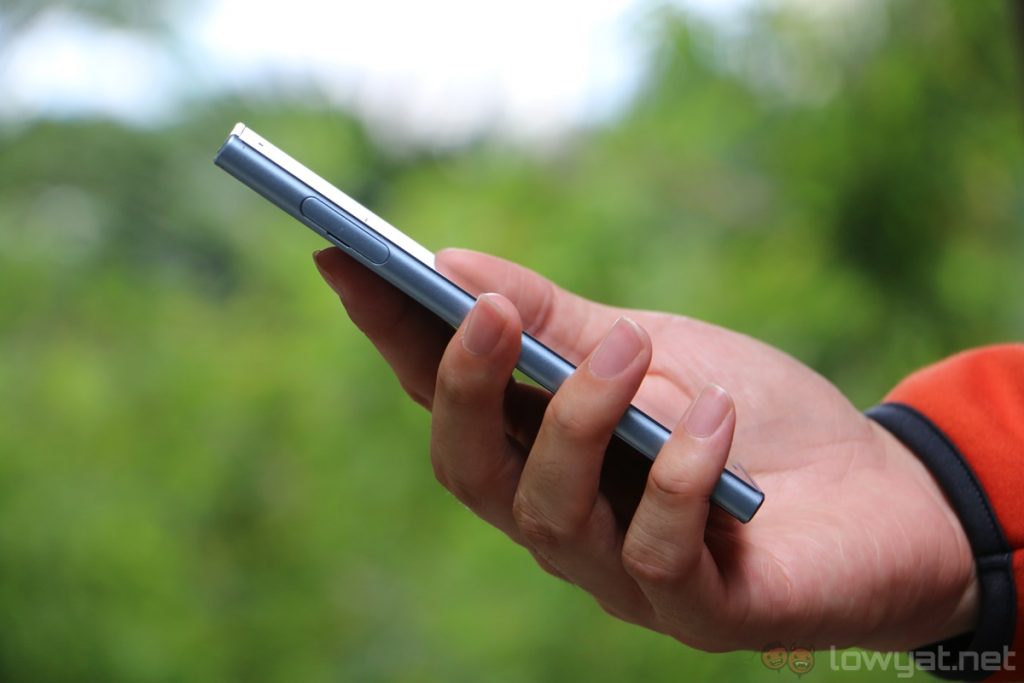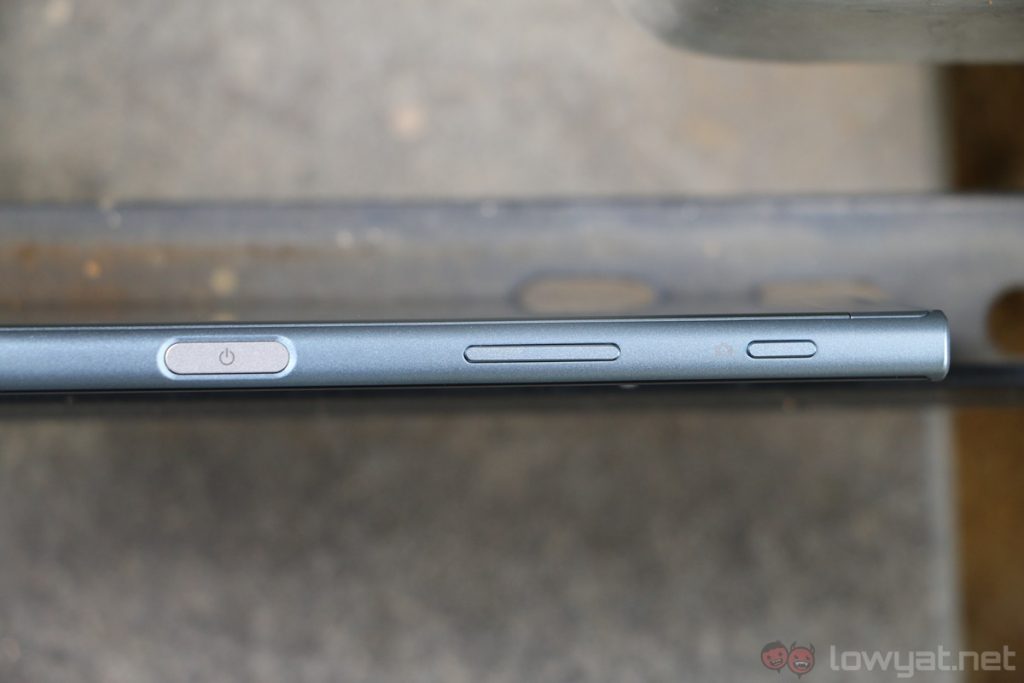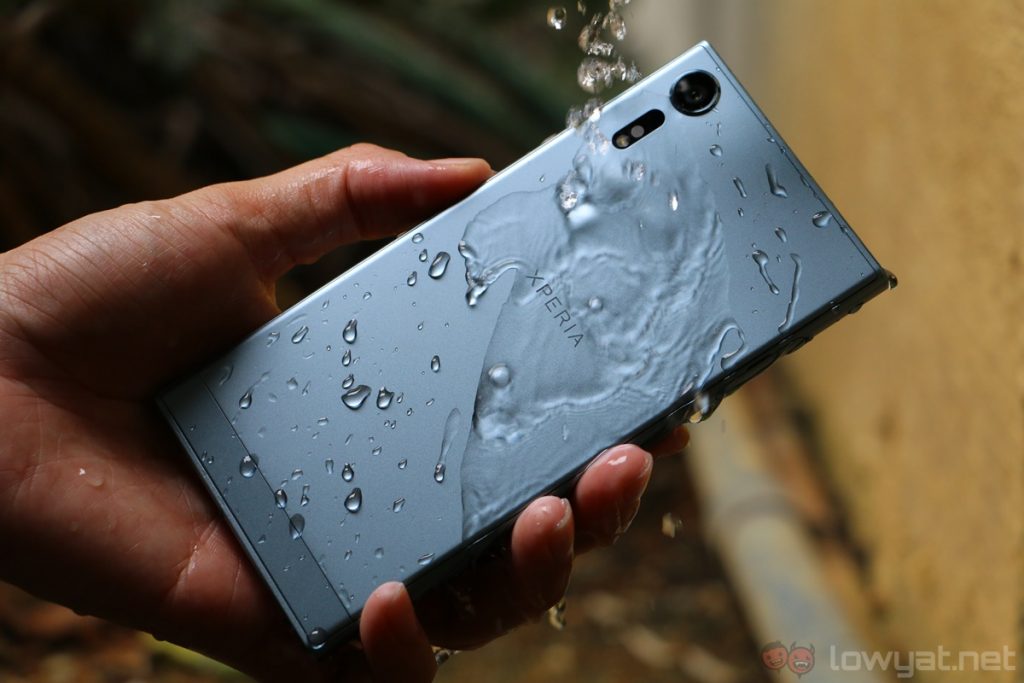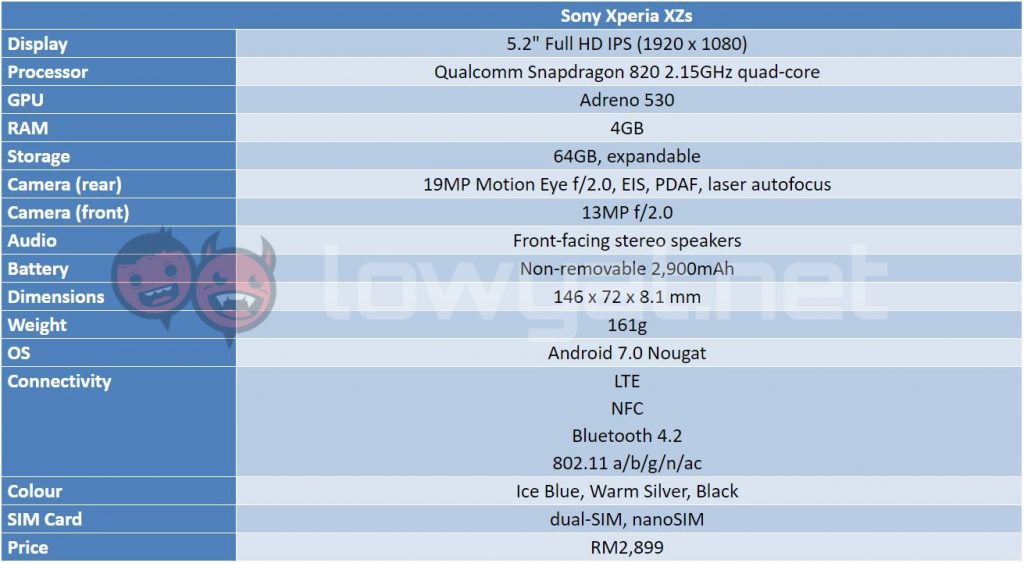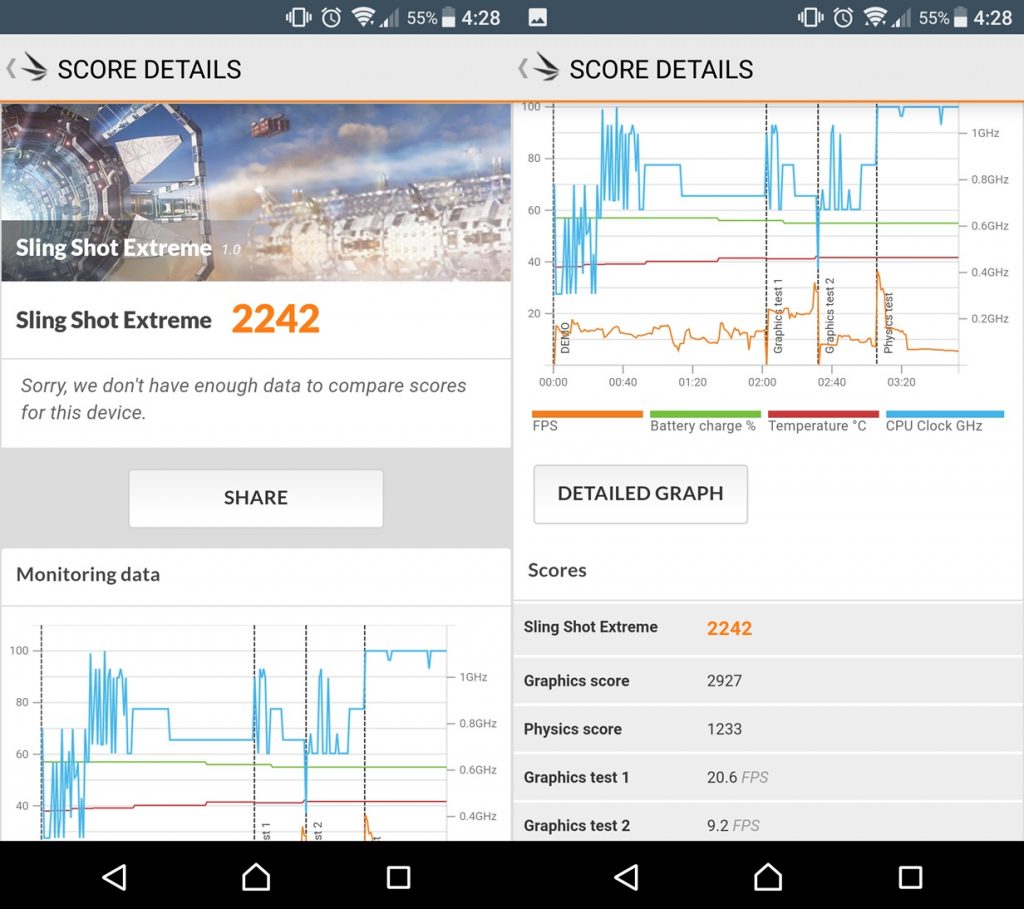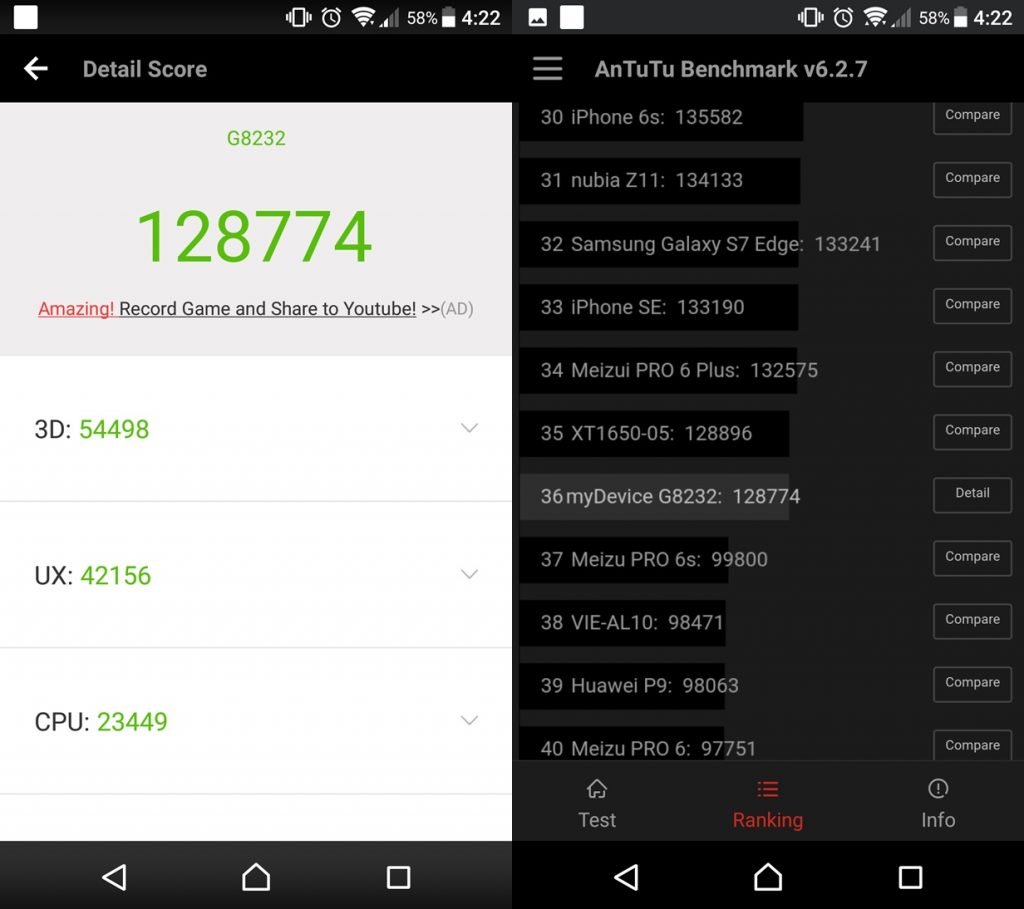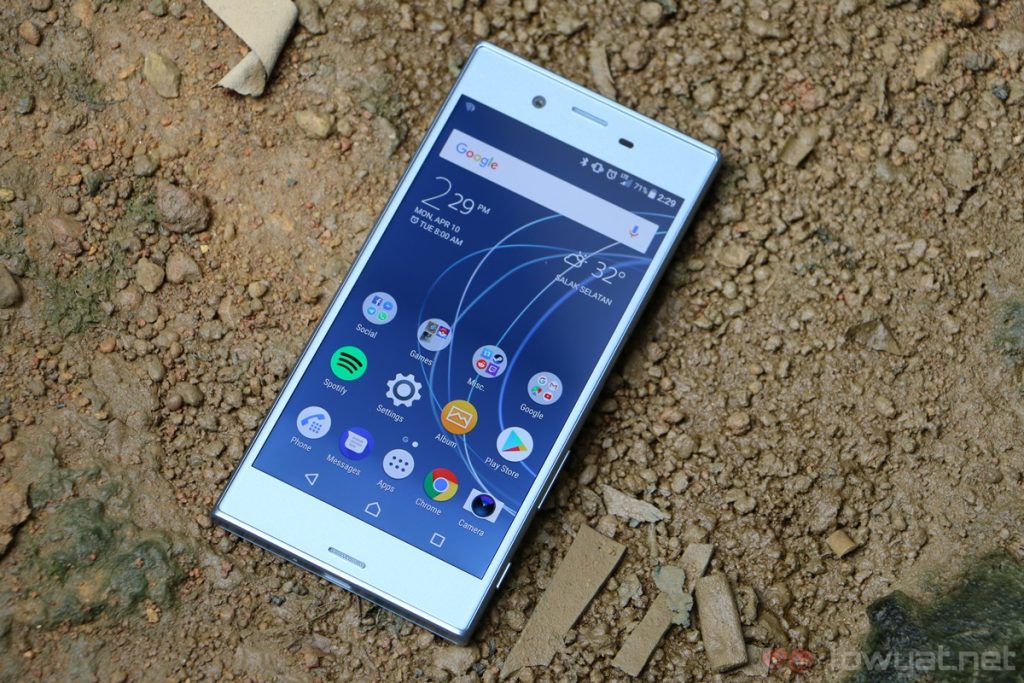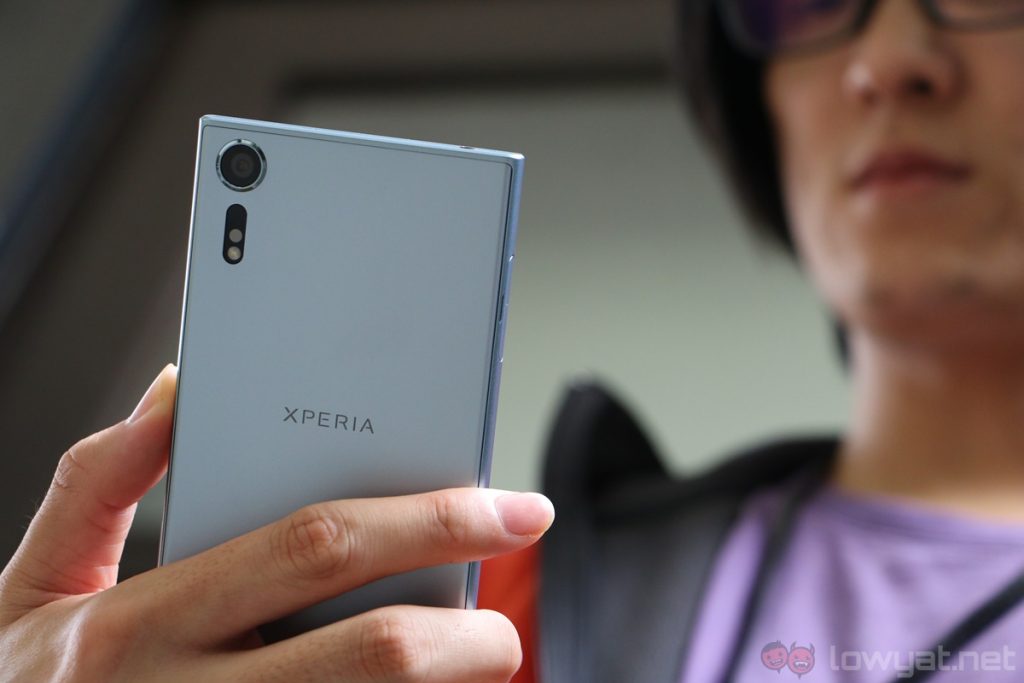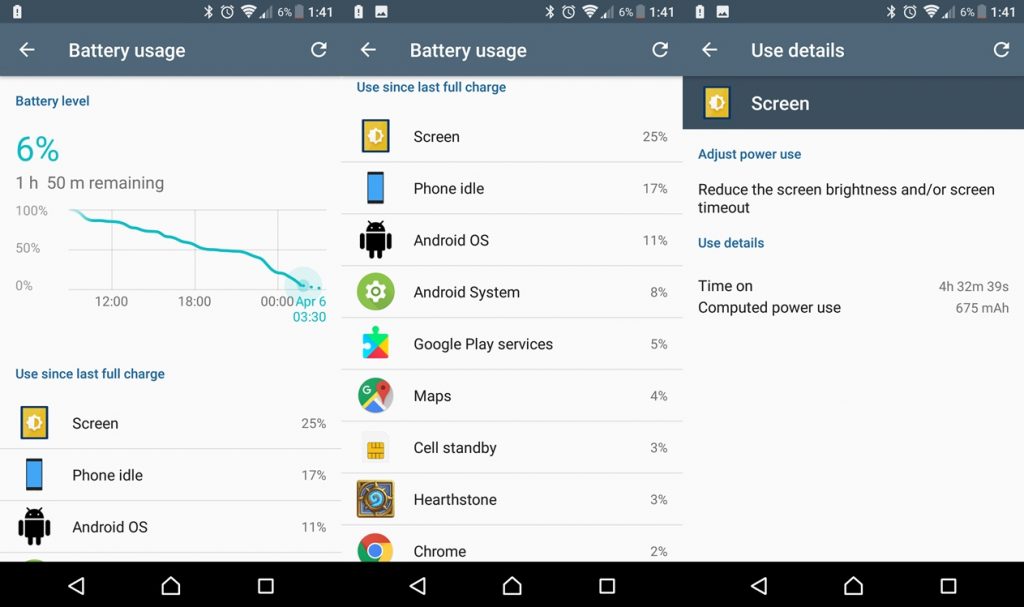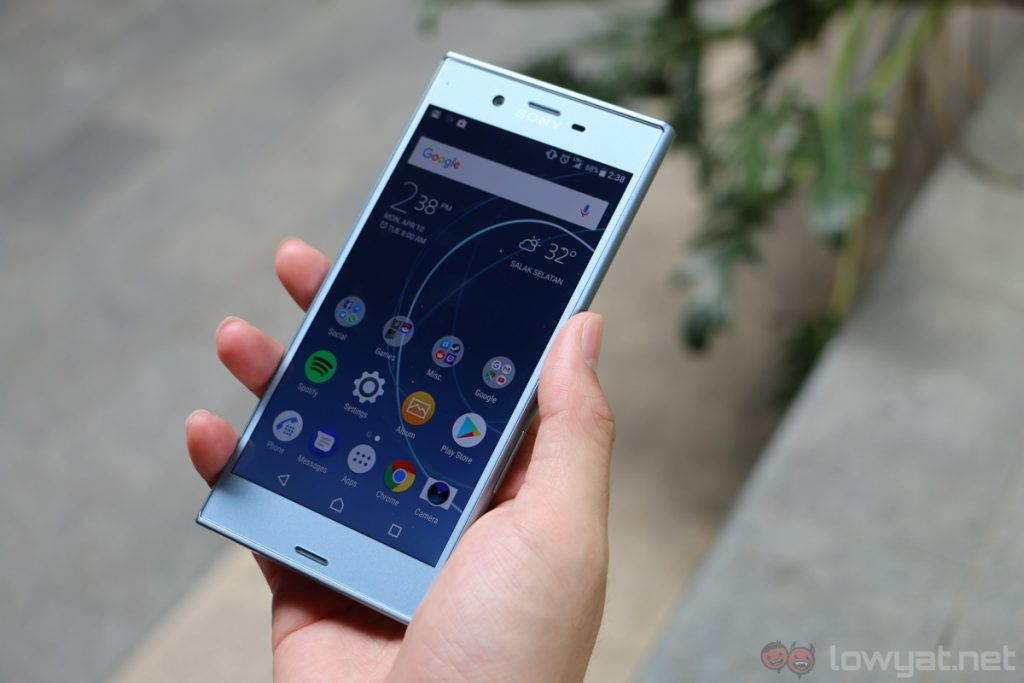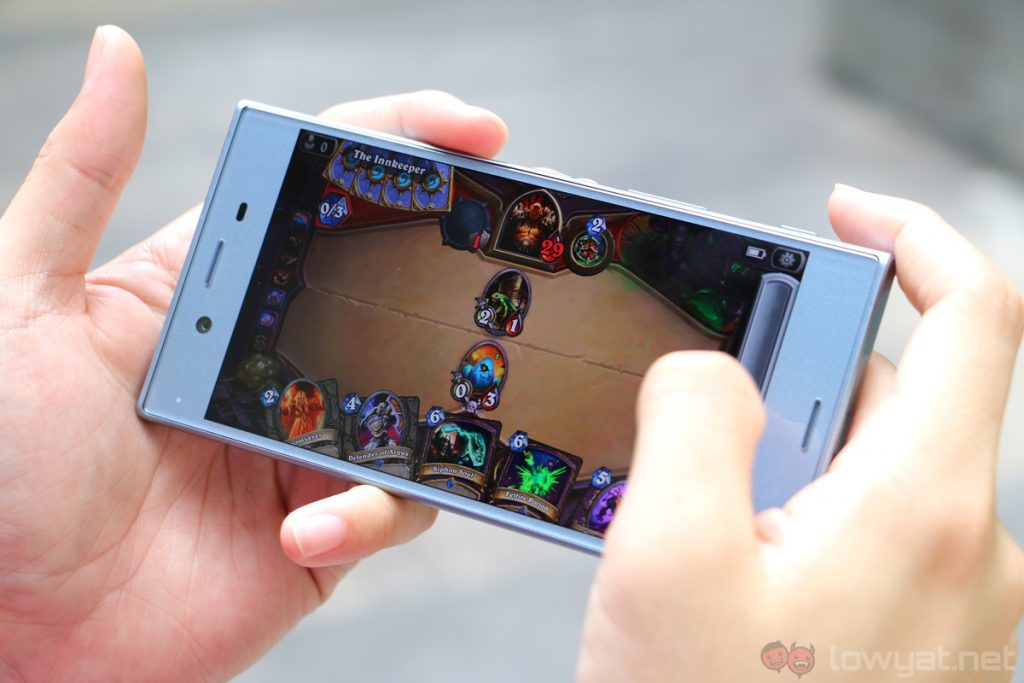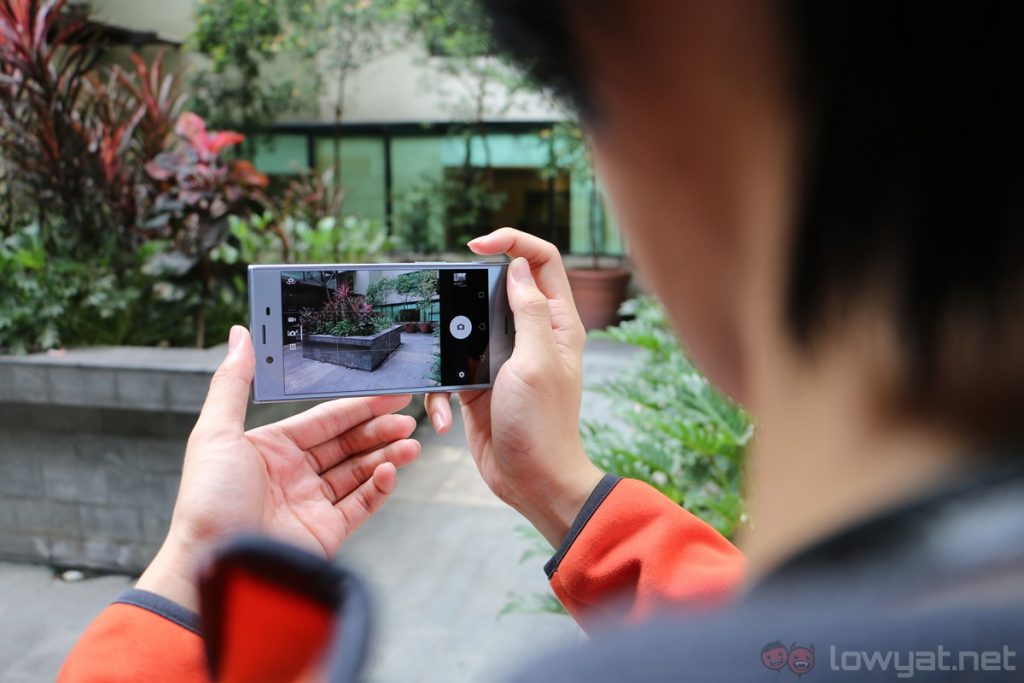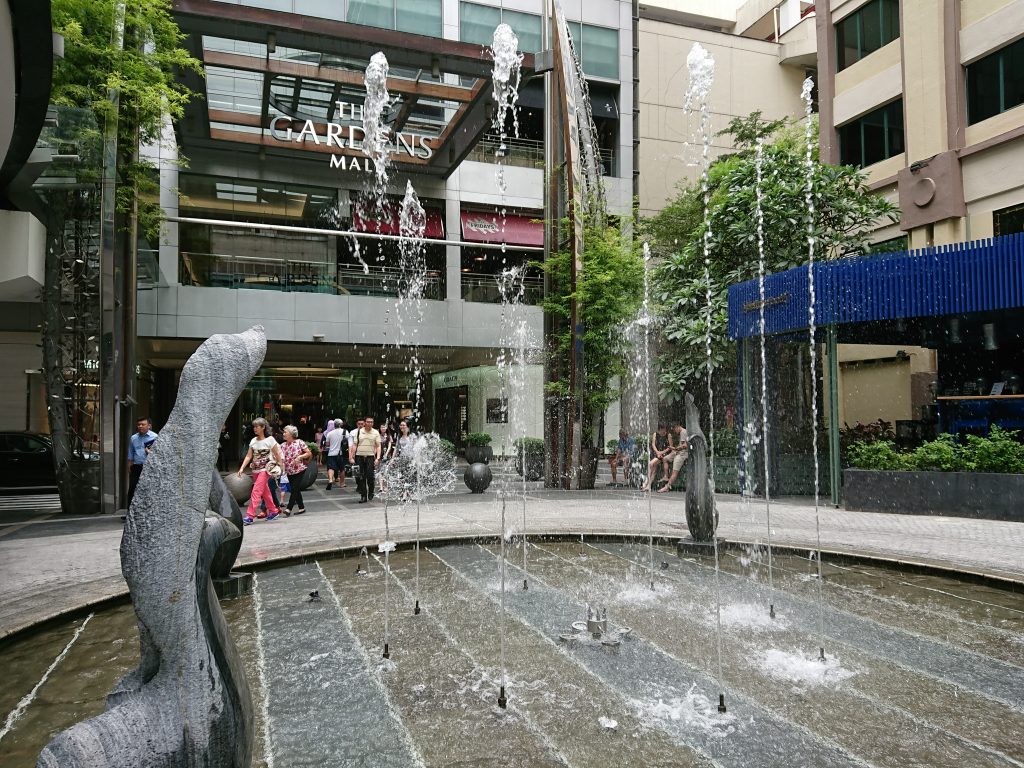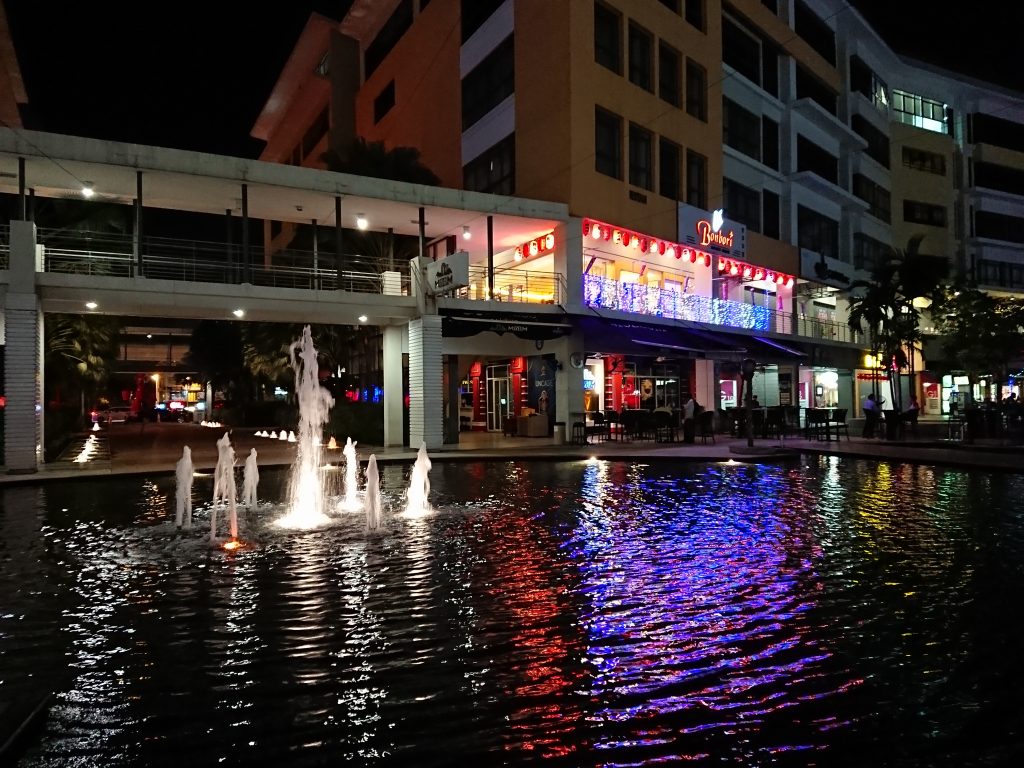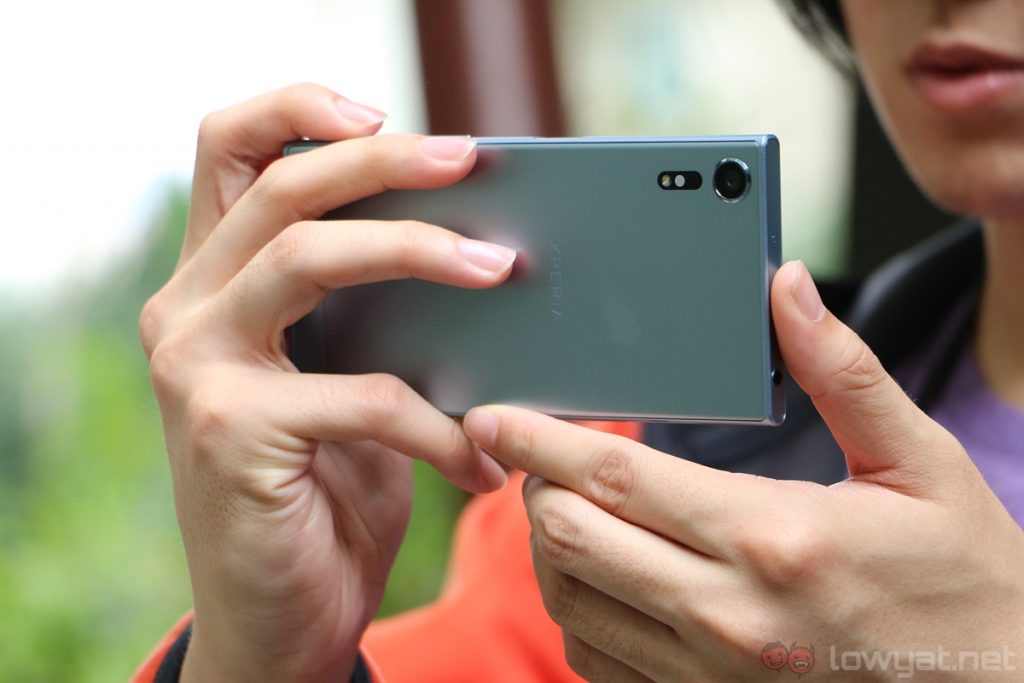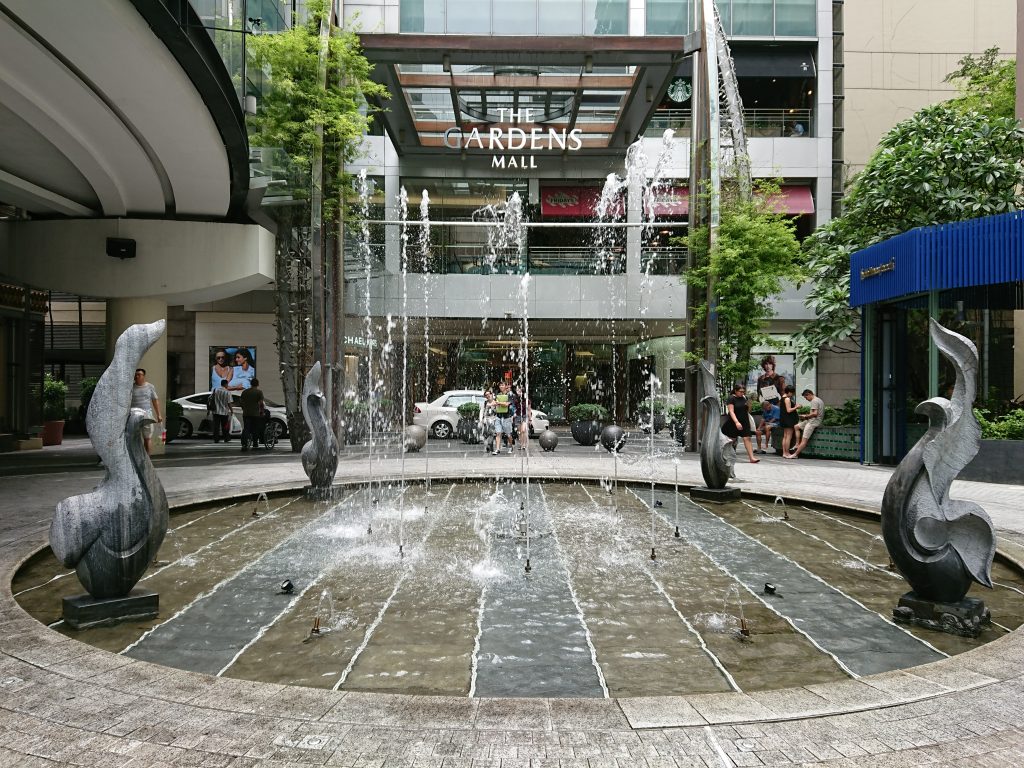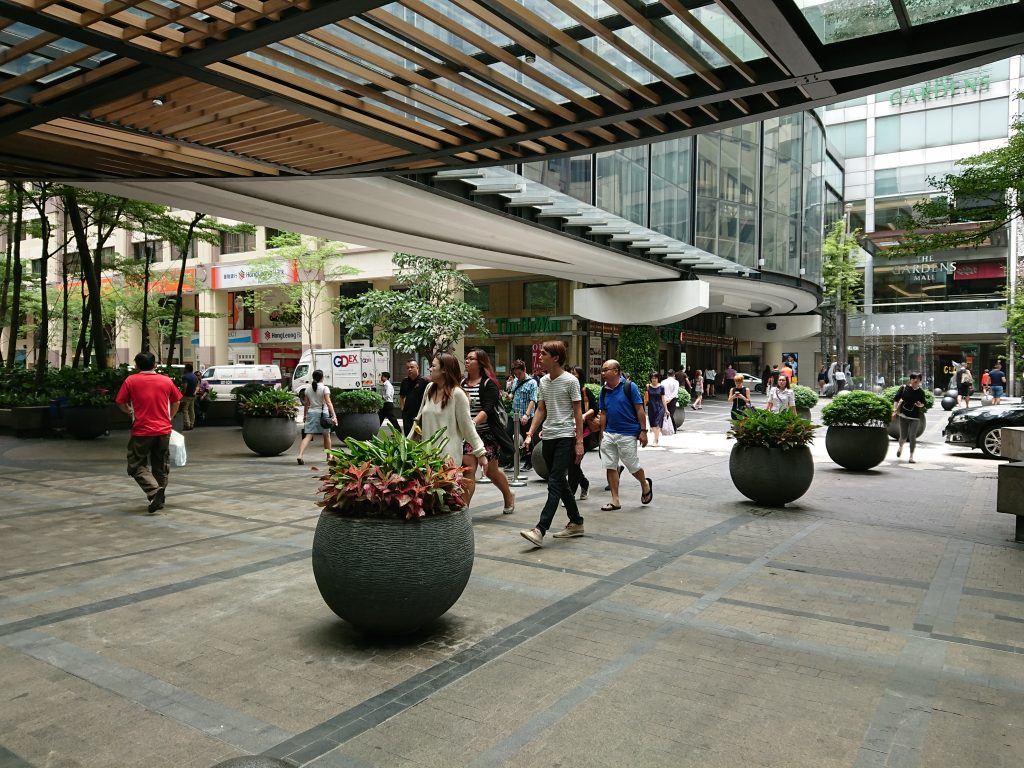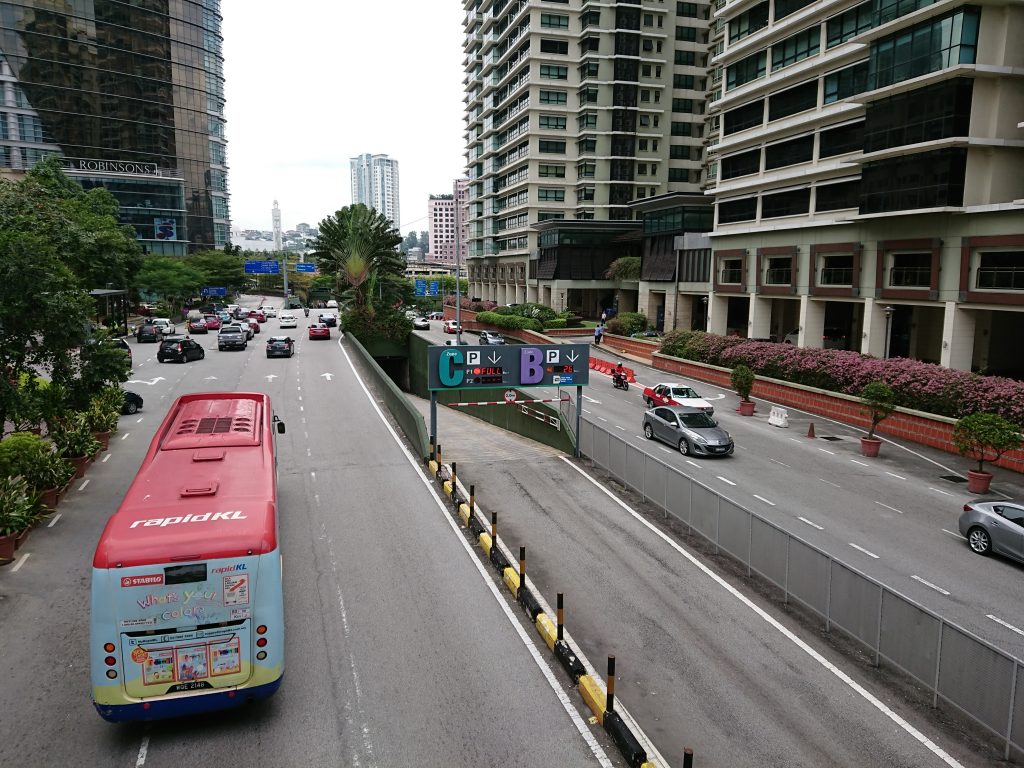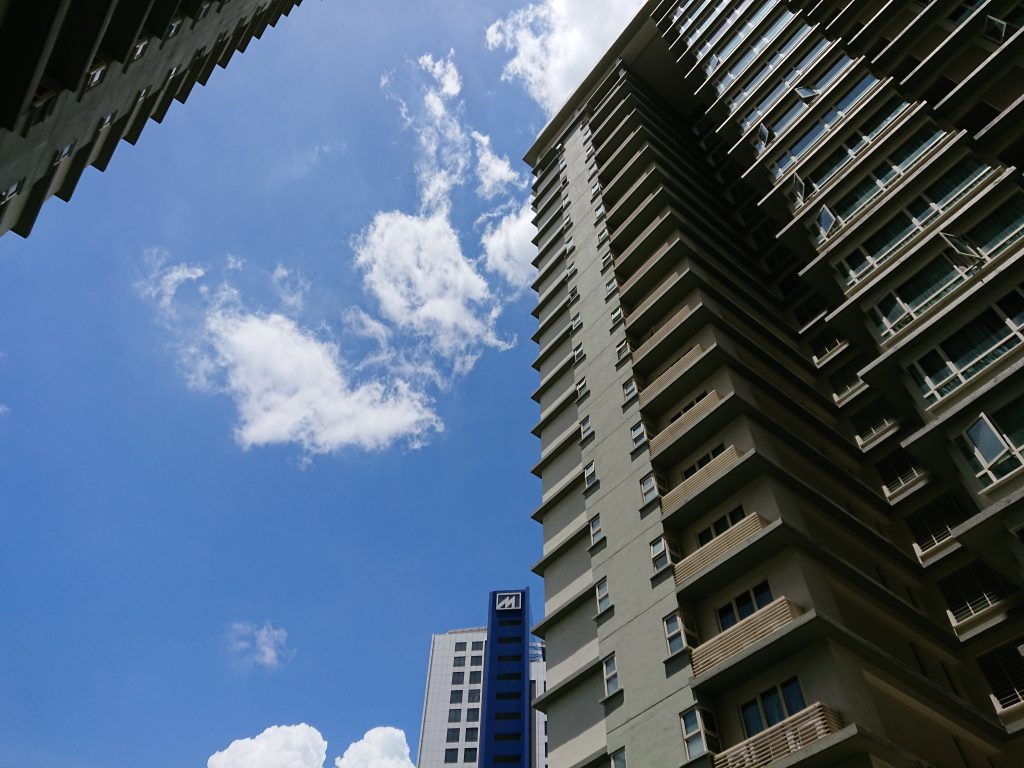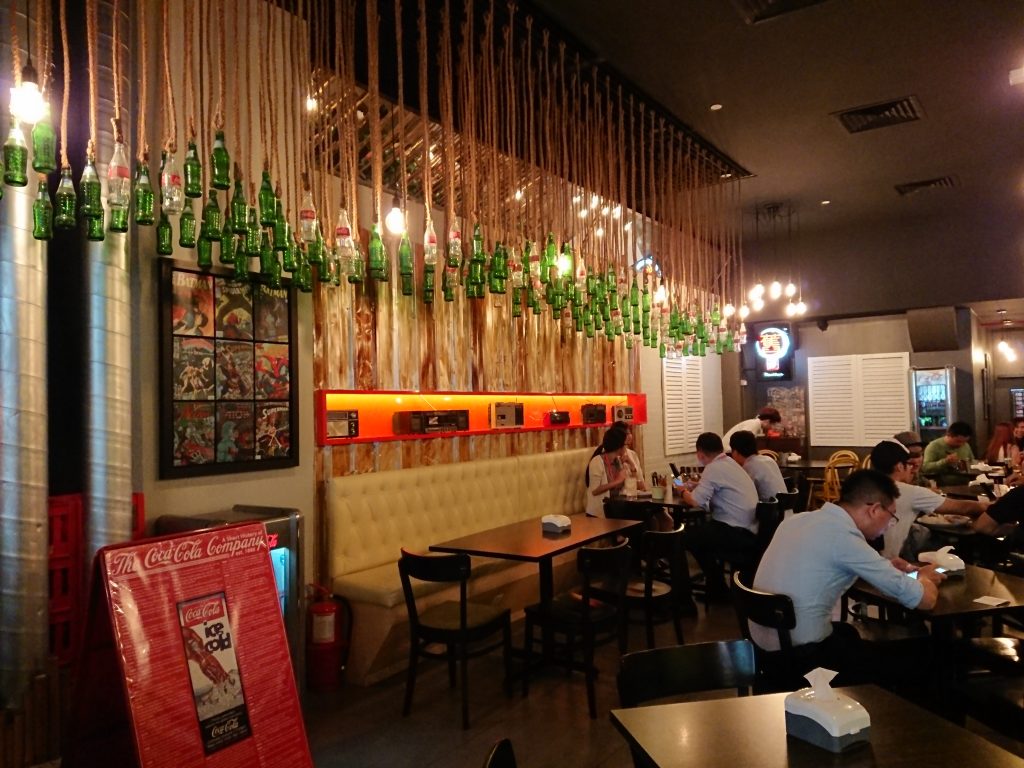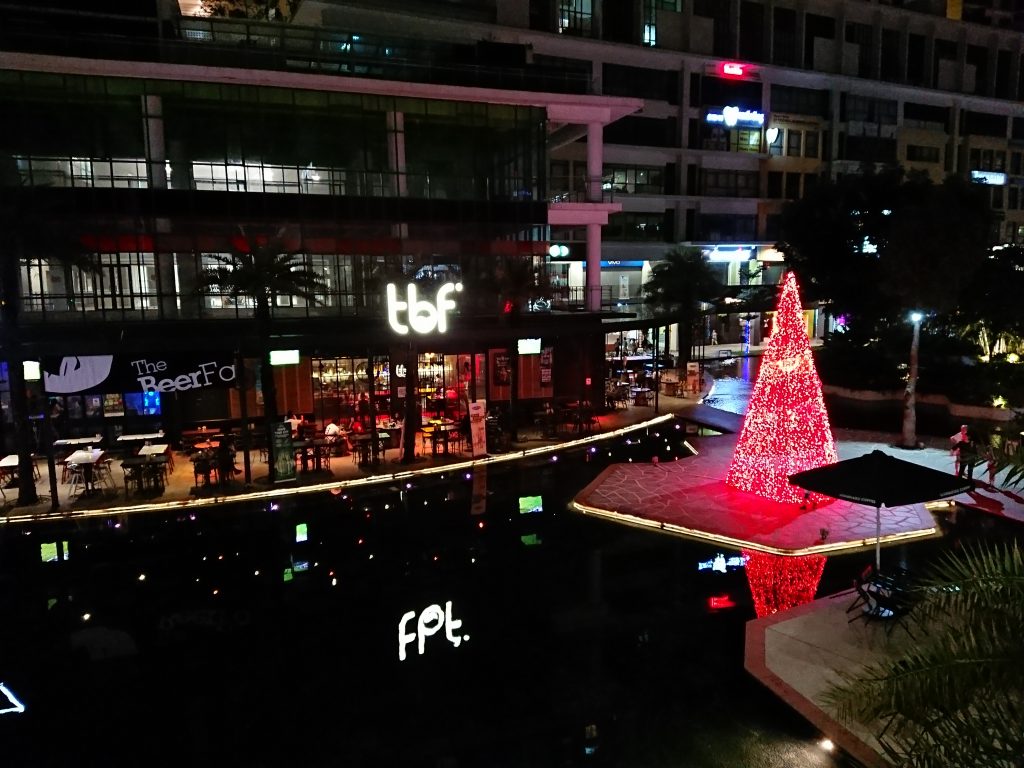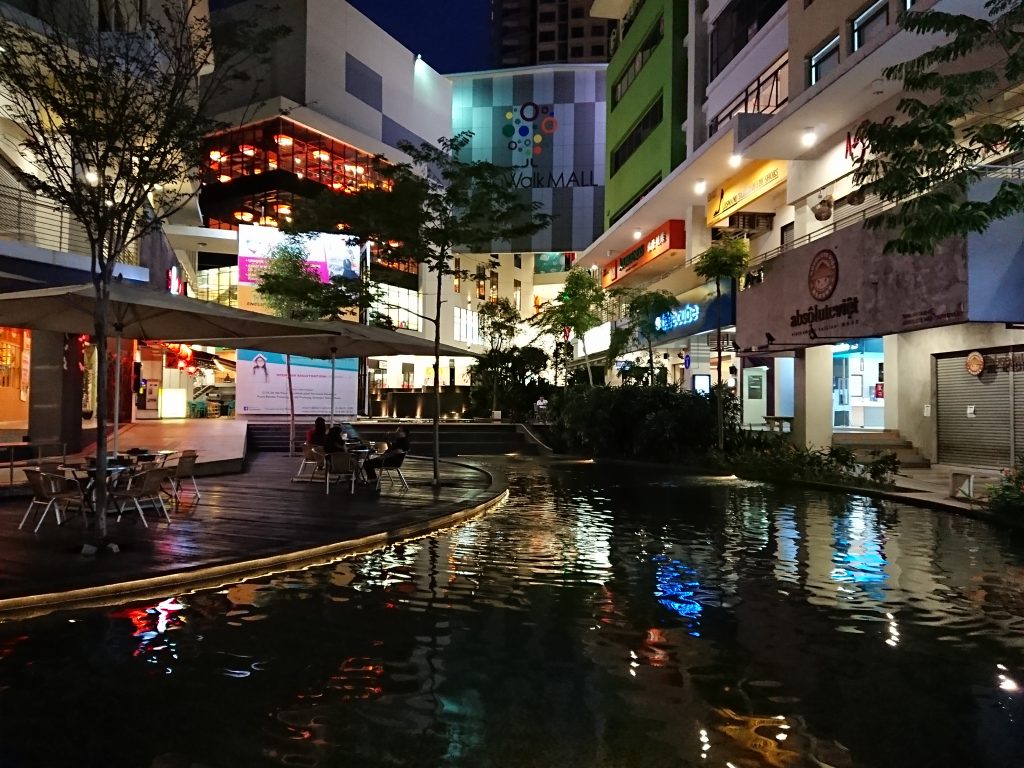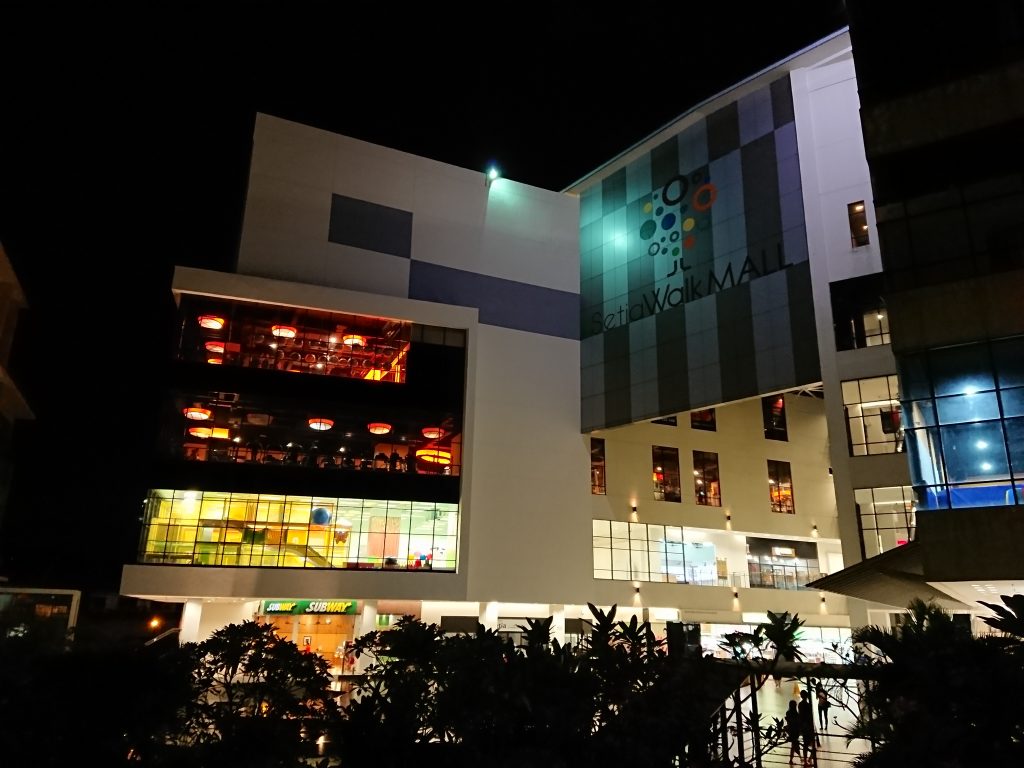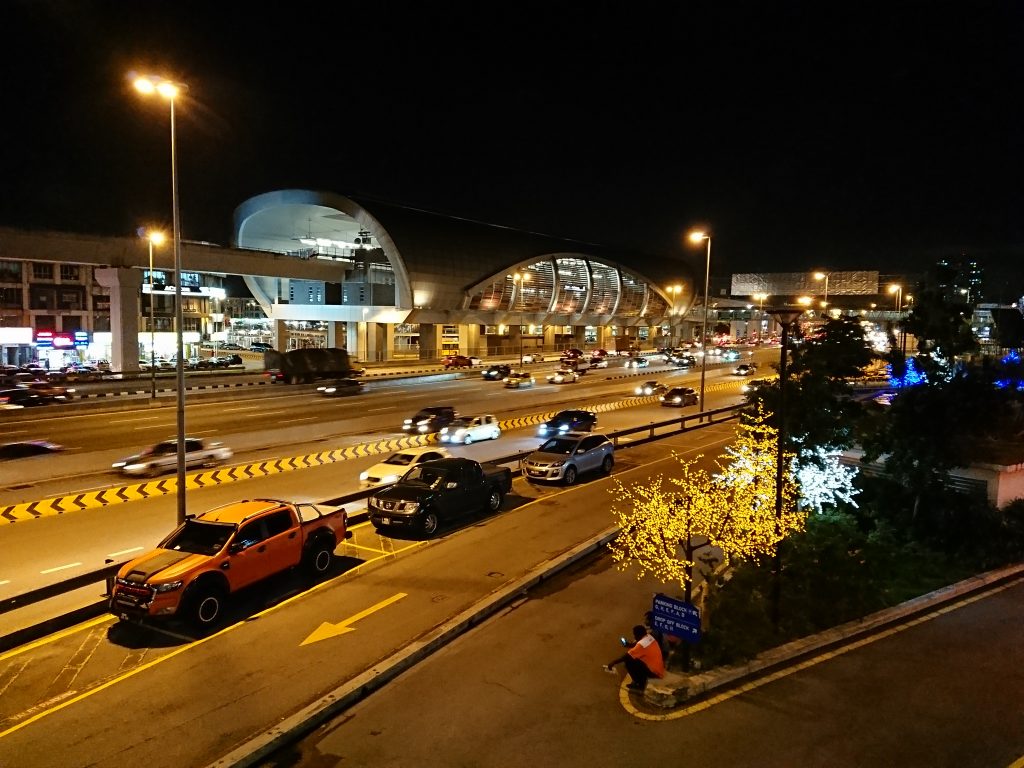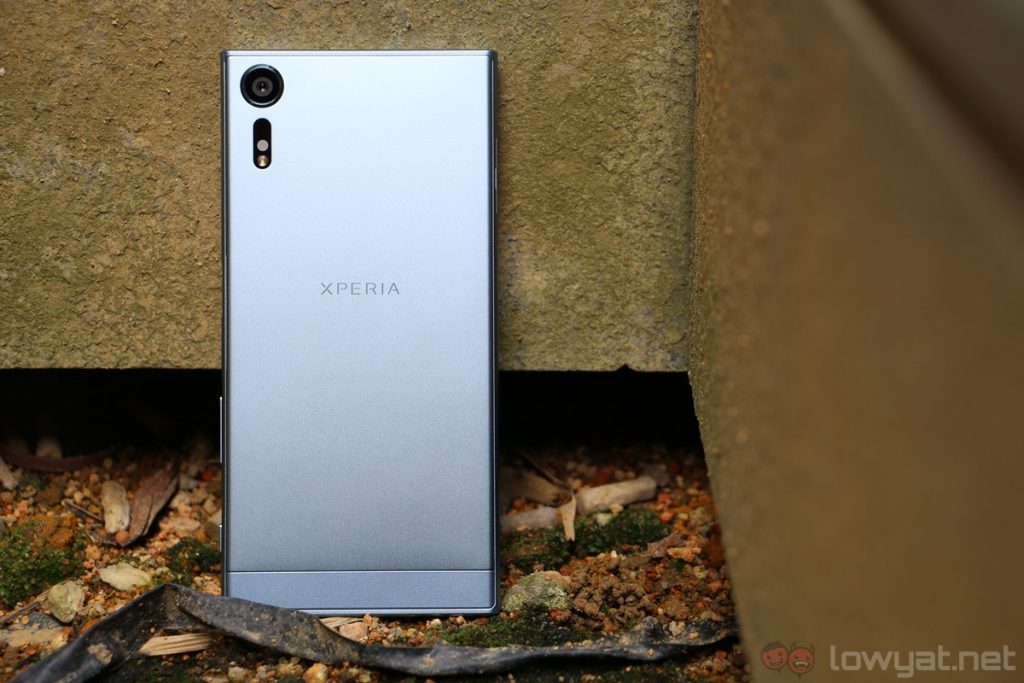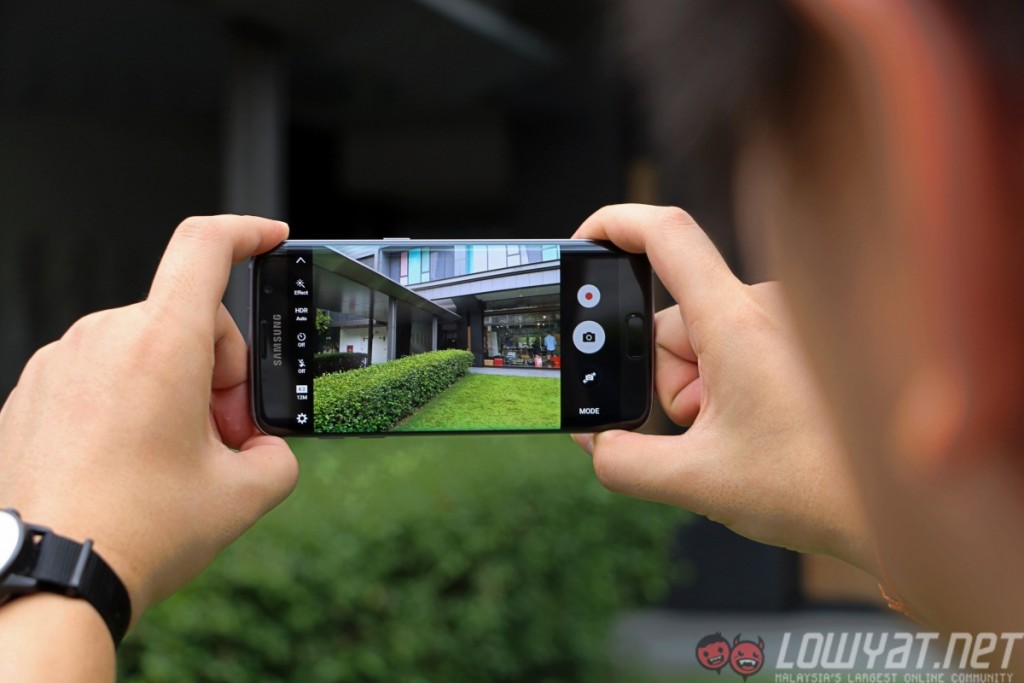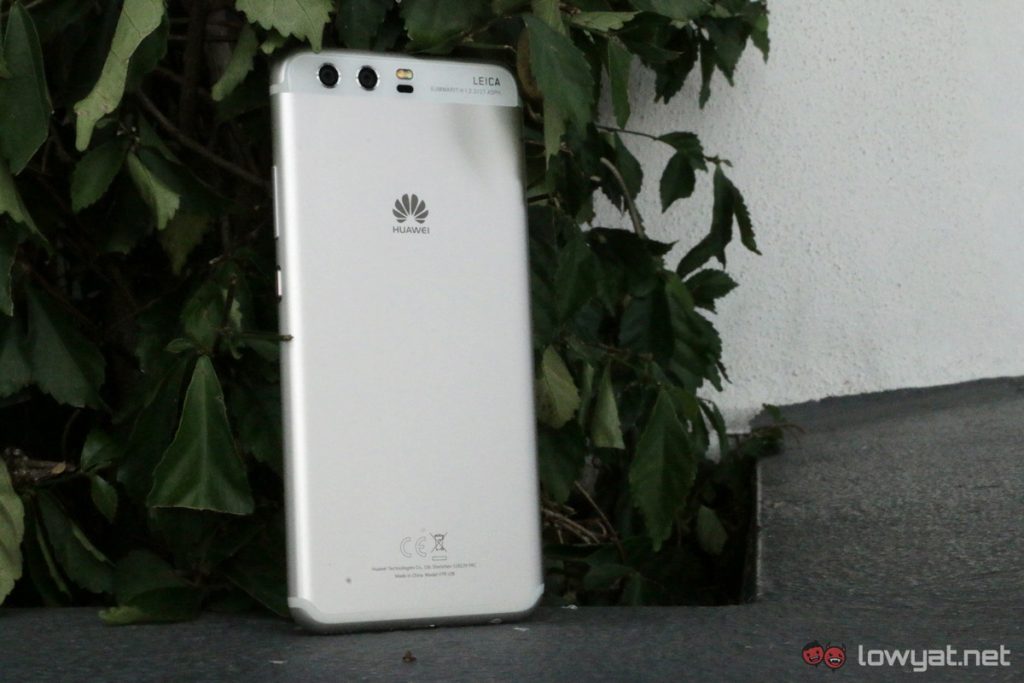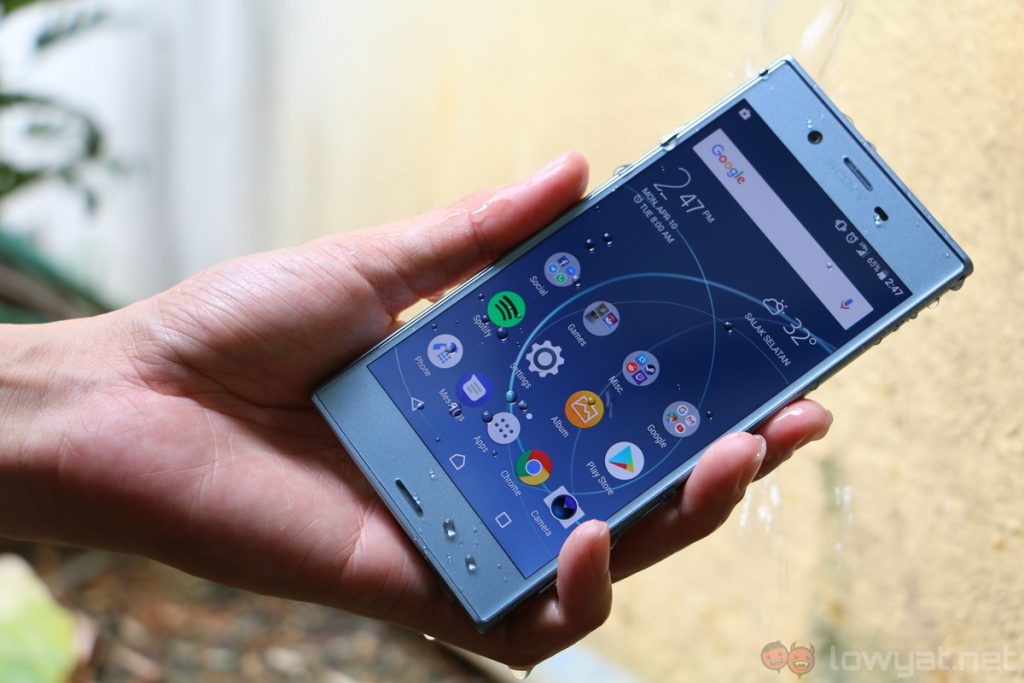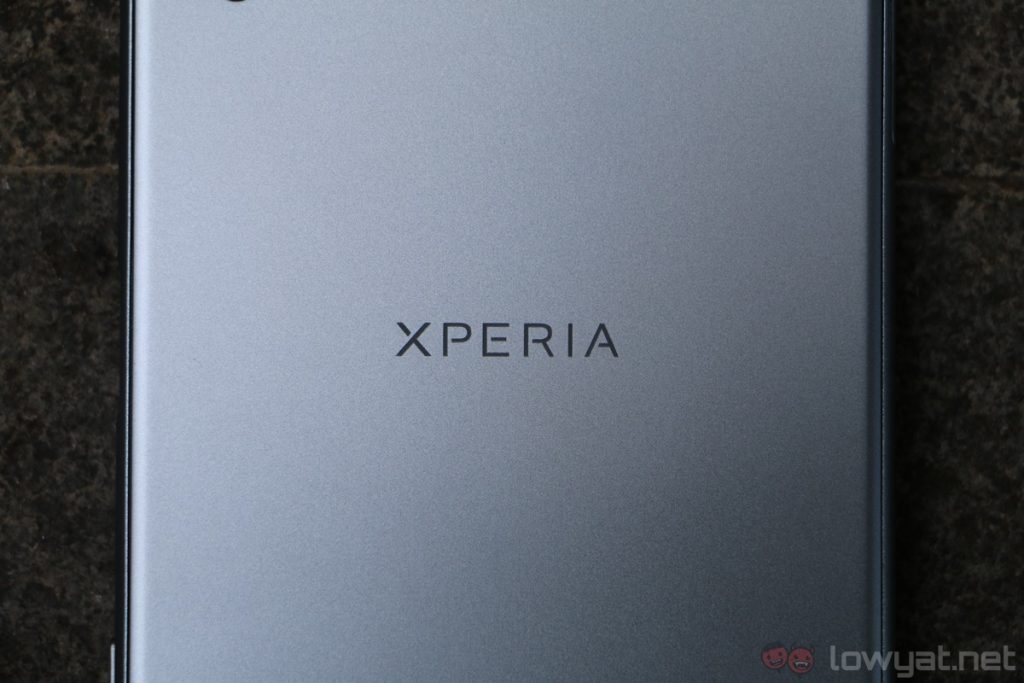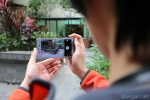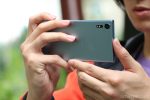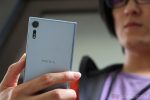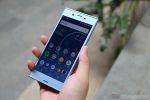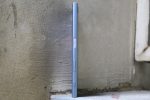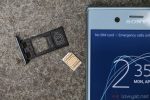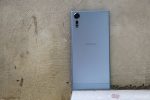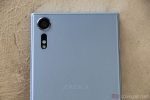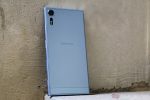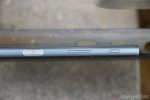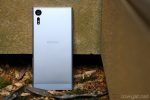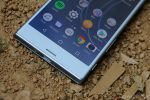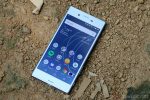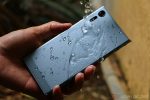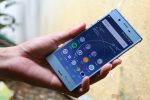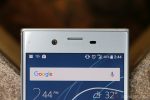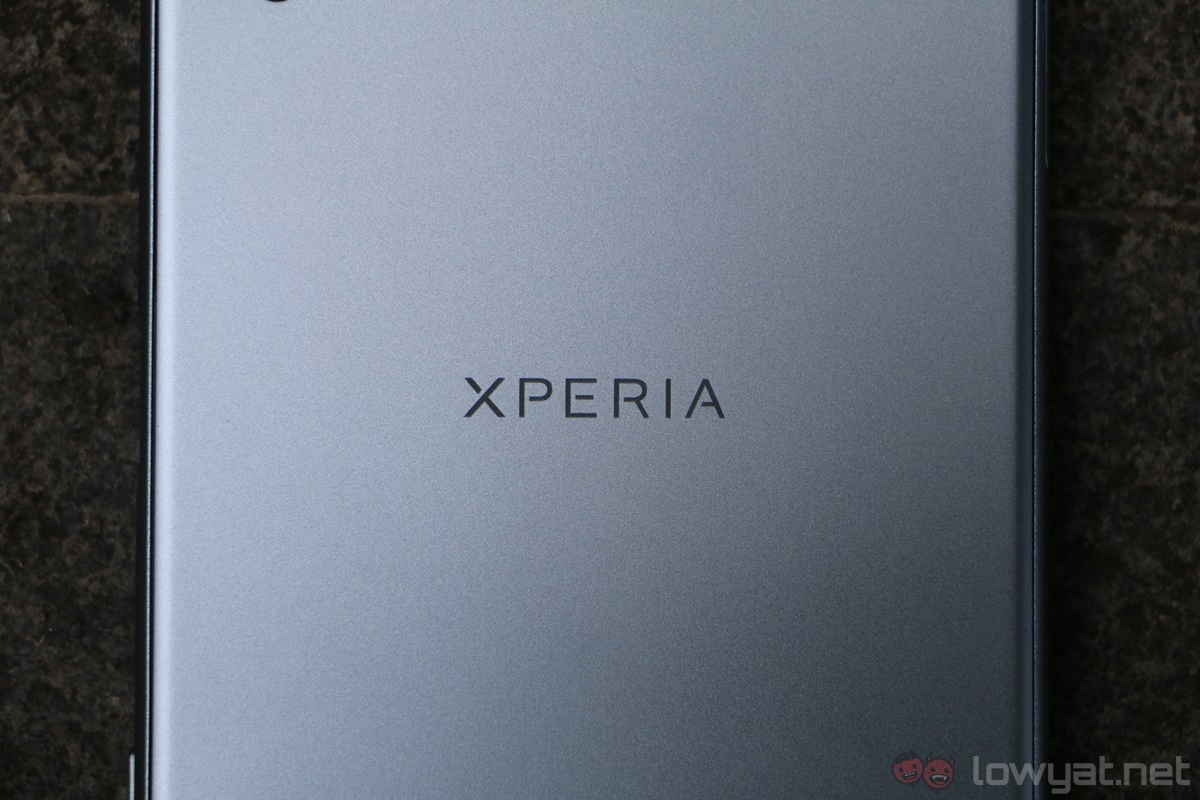On the surface, the Sony Xperia XZs looks just like its predecessor, the Sony Xperia XZ. There is basically only one – and very interesting – change: the Motion Eye camera on the Xperia XZs, which allows video recording at a whopping 960 frames per second.
Over the course of the review, we had tons of fun with the super slow motion effects (something which you may have noticed on our social media channels). Aside from the new Motion Eye camera, however, the Xperia XZs is…well, not all that different from the Xperia XZ, and that is precisely the issue.
Design & First Impressions
If you’ve seen one Sony smartphone, you’ve seen them all. This is again very true of the Xperia XZs. Bar the more pronounced camera bump, the Xperia XZs doesn’t look all that different from the Xperia XZ. Sony may have tried to refresh its design language starting with the Xperia X, but for some reason the company appears to be reverting to the blocky, angular Xperia designs of old.
Like the iPhone’s dated design, it’s probably a good idea for the company to rethink its design approach; it’s 2017, after all.
There’s no going about it: the Xperia XZs looks dated. While I don’t quite mind the angular design of the phone, its sizeable top and bottom bezels make the phone taller than it should be. In a market where sleek-looking phones like the Samsung Galaxy S8 and LG G6 exist, the Xperia XZs looks particularly boring in comparison.
That being said, the Xperia XZs is without a doubt one of the most ergonomically-sound smartphones I’ve used. While the phone’s polycarbonate frame doesn’t give it a very premium feel, it’s surprisingly comfortable to hold. The rounded sides and overall grippiness of the frame definitely help in this regard.
The fingerprint sensor on the side of the Xperia XZs is also one of the fastest – and accurate – sensors I’ve come across. I really like the fact that it doubles as the phone’s power button too: it’s intuitive to just press on the power button and unlock the device in one swift gesture.
Water resistance is also one of my favourite features of the Xperia XZs; it really should be a standard feature for any flagship smartphone today. I can be sure that the XZs won’t suffer from water damage in normal usage. Even better – the feeling of being able to rinse your phone if it gets dirty or oily is a wonderful thing.
Design isn’t the Xperia XZs’ strongest point, that’s for sure, but it is a sensibly-designed phone. It’s comfortable to hold, it has a fast fingerprint sensor, and best of all, it has a water-resistant chassis.
Hardware
Much like the HTC U Ultra and the LG G6, the Xperia XZs doesn’t have the best hardware 2017 has to offer. It’s still powered by last year’s Snapdragon 820 chipset, and while it’s still a very capable processor, upcoming flagship smartphones will almost definitely outperform the Xperia XZs.
But for all intents and purposes, the Xperia XZs performs very well. Gaming on it is very fun, and there’s barely any noticeable lag or stutter throughout my time with the device. Yes, the XZs doesn’t have cutting edge hardware, but it’s still quite a performer.
Benchmark
Software
Sony does a great job when it comes to software, and the Xperia XZs is no different. Compared to my experience with Android 6.0 Marshmallow on its predecessor, Nougat on the XZs is noticeably more pleasant to use; there’s also a slew of new features.
As it should be with Android smartphones shipping with Android 7.0 Nougat out of the box, the Xperia XZs comes with Google Assistant. In many ways, it really does work like a digital assistant, albeit with some caveats here and there: it doesn’t quite get the context of what I’m asking for 100% of the time. However, it’s still very capable.
Other new features Nougat brings to the Xperia XZs include the ability to run two apps side-by-side in Split-Screen mode, quickly alternate between two apps by double tapping the recent apps button, as well as general improvement in performance, which does seem to be the case here. I’m quite happy to find that the YouTube app works flawlessly on the Xperia XZs now; I had some issues with it on the Xperia XZ.
Minimalist is how I would describe the Xperia XZs’ software experience, which is a very good thing. There are some bloatware here and there, but they’re not all that intrusive compared to other manufacturers’ versions of Android. If you’re a fan of stock Android, you’ll feel right at home with the XZs.
Battery Life
Powering the 5.2-inch Xperia XZs is a 2,900mAh battery, and it’s not very big for a device this size. That being said, it does provide decent battery life: I can get through a typical day of usage with the XZs. I also got an average of about four hours and 30 minutes of screen on time; that’s pretty great battery life for such a tiny battery.
Fast charging on the Xperia XZs, on the other hand, is underwhelming. With a quick charger, I only managed to get the XZs up to 30% battery life within 30 minutes of charging. Considering the fact that the XZs merely has a 2,900mAh battery, this is not an impressive charging rate.
Display
The 5.2-inch 1080p display of the Xperia XZs does its job just fine. It’s sharp for a display this size, it gets bright enough for outdoor use, and the colours are punchy for an LCD display. While a higher resolution display may look more impressive, the Xperia XZ’s battery life would definitely suffer.
Audio
Stereo front-facing speakers are really the most ideal speaker setup for a smartphone, and while the Xperia XZs features this very setup, the speakers are noticeably…soft. Even at maximum volume, the speakers still aren’t as loud as, say, the HTC U Ultra’s speakers. It’ll be loud enough if you’re in your living room, but if you’re somewhere with a lot of ambient noise, you’ll definitely want to plug in a pair of earphones.
Camera
This is the differentiator between the Xperia XZs and its predecessor, and it’s supposed to be the XZs main selling point. Equipped with a new 19MP Motion Eye camera, the standout feature of this shooter is its 960fps video recording, which is incredibly fun to play with.
Although the camera takes a rapid burst for only 0.18 seconds, the slow motion shot itself is stretched out to five seconds long. Naturally, the first thing we did when we got the Xperia XZs was to experiment with its 960fps video recording, and we were pretty impressed with the results.

However, it’s not a walk in the park to use this feature effectively. While recording in “Super Slow Motion” mode, I’ll need to press on the shutter button at the exact moment I want to capture in slow motion. Other than that, the video recording can get pretty noisy in less-than-optimal shooting conditions: the lighting has to be absolutely great for the best results. Also, the 960fps video recording is only limited to 720p.
Video recording capability aside, the Xperia XZs’ camera performance when it comes to still images are…well, an improvement over the Xperia XZ. There’s no more noticeable stuttering when the camera’s tracking objects with its Predictive Hybrid Autofocus feature, and the camera UI is rather responsive too in all lighting conditions.
However, as is always the case for Sony smartphone cameras over the past few years, aggressive post-processing is still the Xperia XZs’ main weakness. Images look fine when viewed as a whole, but once you zoom into them, the very same set of images look less flattering. The lack of optical image stabilisation makes it difficult to get blur-free shots too – especially in less than ideal lighting.
As a company which supply camera sensors to manufacturers like Samsung and Apple – phone makers that have class-leading cameras on their devices – it’s rather disappointing to see this level of camera performance from the Xperia XZs. It’s evident that Sony can produce really good hardware; all it has to do now is refine its software.
Sample Images
Competition
At RM2,899, the Xperia XZs is not an affordable flagship smartphone – there’s also plenty of competition at this price point, and none is more obvious than the Samsung Galaxy S7 edge.
Despite being last year’s flagship smartphone, the S7 edge’s Exynos 8890 processor is really on par – if not equal – to the Xperia XZs Snapdragon 820 processor. On top of that, the S7 edge also has a more impressive 5.5-inch 1440p dual-curved Super AMOLED display, a much bigger 3,600mAh battery, sleeker design, as well as superior camera performance.
But the Galaxy S7 edge’s most obvious advantage over the Xperia XZs comes down to price: the S7 edge can be easily found for less than RM2,500 now, which is much lower than the XZs’ RM2,899 price tag. For less money, it’s hard to choose the Xperia XZs over the S7 edge, although the 960fps video recording capability of the former is a key advantage here.
The Huawei P10 is also another noteworthy competition. In comparison to the Xperia XZs, the P10 has the upper hand when it comes to camera performance; its design – though very familiar and iterative – isn’t as boring as the XZs. Let’s not forget the fact that the P10 only costs RM2,499, which is RM400 less than the Xperia XZs.
But to the Xperia XZs’ credit, it’s a water-resistant device, and its battery life is better than the P10. This is despite the fact that the P10 has a slightly bigger 3,200mAh battery than the XZs’ 2,900mAh battery, which surprised me quite a bit. On top of that, there’s also the Xperia XZs’ 960fps video recording; a feature not offered by any other manufacturers – yet.
Conclusion
The Sony Xperia XZs is a one-trick pony. Aside from the impressive 960fps video recording, the XZs is basically a slightly refined Xperia XZ, which wasn’t exactly a great smartphone to begin with.
That is not to say the Xperia XZs has no redeeming qualities. It has a dated design, yes, but it’s a comfortable device to hold. Its software is also one of its strongest suits, and it has rather reasonable battery life too (considering the fact that it only has a 2,900mAh battery).
But the Sony Xperia XZs has to compete with many formidable 2017 flagship smartphones, most of which are faster, sleeker, and more unique than it is. If Sony are to remain relevant in the smartphone market this year, it has to do better than the Xperia XZs.
Photography by Terry Bass and Leon Lam.
Follow us on Instagram, Facebook, Twitter or Telegram for more updates and breaking news.


